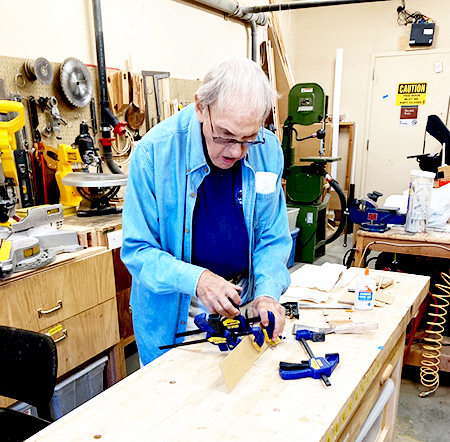Glued, Screwed, and Tattooed
Glued, Screwed, and Tattooed
History says that the screw thread was invented about 400BC by Archytas of Greece. He is sometimes called the founder of mechanics and was a contemporary of Plato. One of the first applications of the screw principle was in presses for the extraction of oils from olives and juice from grapes.
Screws help to hold things together, such as pieces of wood or metal. Compared to nails, screws provide more strength and holding power. They also form a tighter seal. Plus, unlike nails, they can also be removed fairly easily.
Although screws were widely used as fasteners, the mass production of screws did not start until the mid-1700s. Prior to this, blacksmiths would deliver large quantities of nails to a family, who would then laboriously file threads into the nails by hand, to make their screws.
Jesse Ramsden, a British scientific instrument maker, in 1770, made the first satisfactory screw-cutting lathe. Using his lathes, a precision screw could be cut. These screws allowed precision instruments to be made to facilitate the construction of steam engines and machine tools. Their use in surveying instruments assisted in the construction and development of canals, roads and bridges.
Slotted screw heads were the easiest to manufacture, but Oregonian inventor, John P. Thompson, thought that a crosshair-style engagement would be a better idea. He patented the idea in 1932 but, unfortunately, he was not a very good salesman. Thompson abandoned the venture and sold the patent to Henry Phillips, also of Portland, who formed the Phillips Screw Company. The Phillips screw and screwdriver was born. While it didn’t make a lot of noise in its debut, the Phillips screwdriver is perhaps one of the most groundbreaking inventions of the 20th century. The first commercial company to adopt the Phillips Screw was the Cadillac Company in 1937. It was soon utilized by railroad and airplane companies.
Not much changed until 1967 with the introduction of the Torx screw head and driver which was designed to prevent the driver from “camming out,” that is popping out. Today, more than 200 billion screws are used every year across the United States.
The “threading” on screws forms a helix, not a spiral. A spiral is a curve that winds around a fixed point with an ever-increasing radius while a helix is a three-dimensional curve that twists around a cylinder at a constant inclined angle. A spiral staircase forms helixes, not spirals.
This chair is an example of one of the many projects the Termites undertake. It literally came apart. Fortunately, the occupant was not injured. The Termite Glue Meister was able to reassemble it with glue alone. Screws were not required. Many of our in-house designs utilize both glue and screws. We also have a small branding iron that we use to tattoo our name onto the wood of some projects like our window openers. Ray Arnold used to say that our wood crafts were glued, screwed, and tattooed. We miss him



